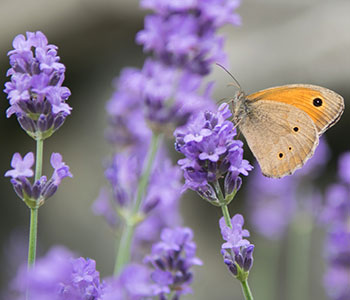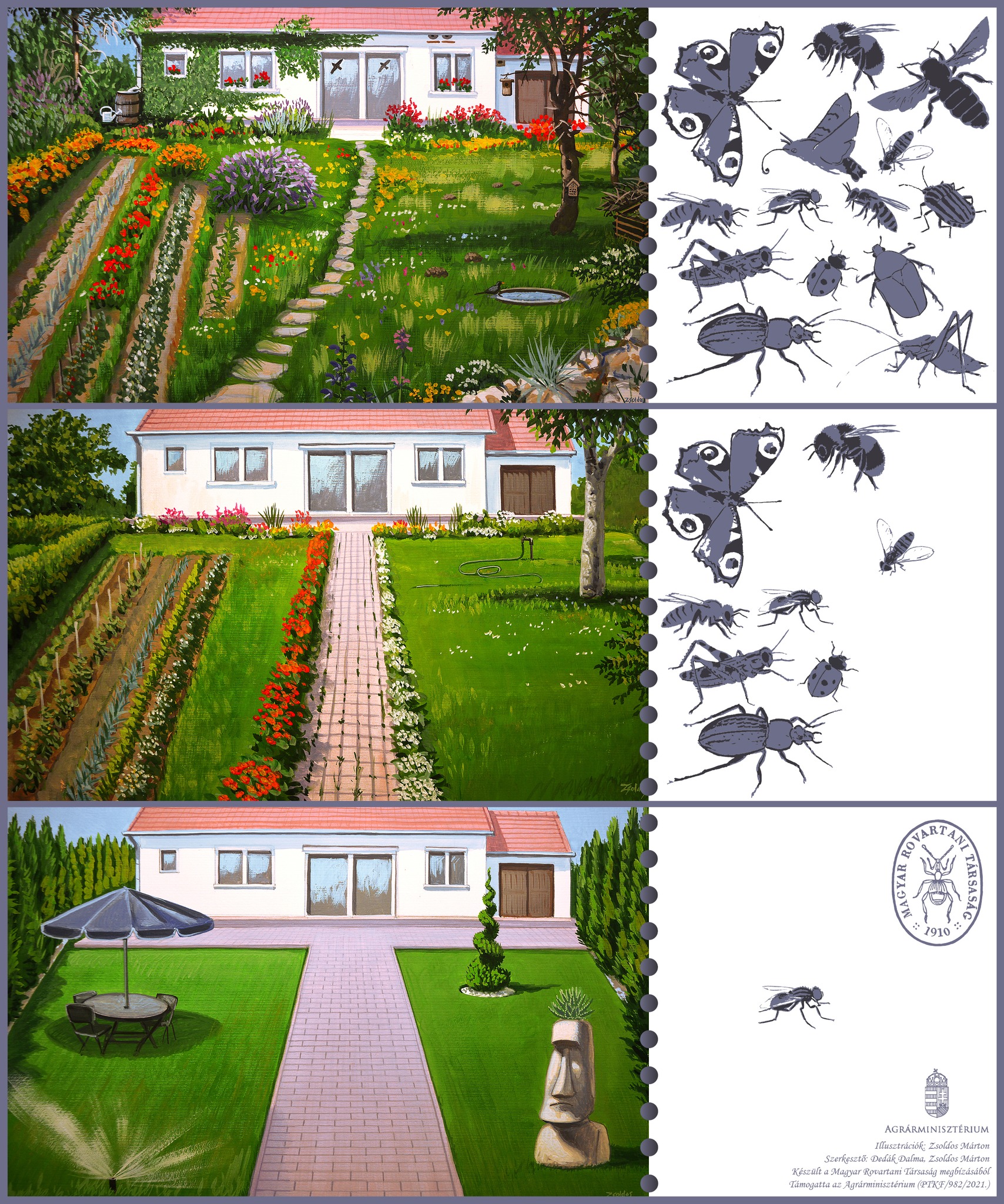- HOME
- AGENCY
- SERVICES
- CLIENTS
-
COLUMN
-
Column
- Stalk, leaf & tuber: beetroot total
- Cheers to life: White wine and champagne can protect our hearts
- Aspects of vine breeding in times of climate change
- Emerging from the wine crisis: new strength with clarity, character and strategy
- What does the younger generation think about wine?
- Wine under attack: lobby groups argue in favour of an alcohol ban. We argue in favour of enjoyment!
- Christmas, a time of excessive food waste
- Unpacking Wine. A guide by The Porto Protocol Foundation
- Forests store even more CO2
- Great joy about my yoga teacher certificate
- Natural beach as far as the eye can see
- The wine industry is facing major new challenges.
- Die Wirtshaus-töchter (The inn daughters) in a cheerful apricot dumpling competition
- Honey bees versus wild bees. A real conflict?
- 100 years of biodynamics. Masterclass @ VieVinum: 27 May at 9 a.m.
- Wine on Top. VieVinum side event on Sunday, 26 May
- About »Innehalten« (To pause). A favourite book
- Why we call for bird counting every year
- Climate change-induced snow reduction affects soil nutrients
- Call for disorder! In support of our animals for the winter.
- Salmon farming. A critical look into the fishing nets.
- Facts, figures and data on the dairy industry
- Die Wirtshaustöchter (The Inn Daughters) at the Drosendorf lido in the Waldviertel region of Austria
- Budding in our vineyards
- Private gardens as an important contribution to biodiversity
- Vitiforestry. Agroforestry for the viticulture.
- Bird feeding. What to bear in mind.
- The Human Rights – to read up
- The benefits of animals in the vineyard
- Forest: elixir of life and remedy
- Diversity of Raspberry Varieties & a fine raspberry ice cream recipe
- Good sun protection, bad sun protection
- About our indirect water consumption through consumer goods
- Interview for the Circle of Wine Writers
- Biodiversity in the vineyards
- Sommelier Spotlight: Beatrice Bessi
- Our vintner recommendation for the VieVinum
- The relevance of the climate targets for viticulture
- » Gute Sachen «« – Marlis' new indulgence boutique
- Gardening and also houseplants are good for the soul
- Sommelier Spotlight: Katja Scharnagl
- Best in class: Elaborated CO2 calculator for agriculture in UK
- Sommelier Spotlight: Simon Zimmermann
- Soil life even in winter. Because the soil never sleeps!
- Sommelier spotlight: Andrea Morris
- A delightful and unburdened feast!
- Sommelier spotlight: Christopher Sealy, Alo Food Group Toronto
- Study on online wine tastings
- Rewilding Europe – imitators wanted!
- Sommelier spotlight: Linda Milagros Violago from Canlis in Seattle
- The five principles of soil health
- Pros and cons of harvesting grapes by machine
- On the CO2 emissions of water in plastic bottles
- Simply a recommendation: pure Yoga at Pureyoga in Vienna
- The flap of a butterfly's wing
- Fisherman's Fritze fishes fresh fish ...* For how much longer?
- Why eating according to the seasons also makes us happy
- Biodynamic Winegrowing in One Sentence – an Attempt
- On the misunderstanding of "organic versus sustainable viticulture"
- Undervalued nettel
- Linkedin is not Facebook is not Instagram
- Bird watching makes you joyful
- Look back ahead
- Plea for the half-bottle
- Back pain & Co
- What characterises a good website
- The fundamentals of positioning
- Employee retention in tourism through sustainability
- Time of maturation & about freedom in viticulture
- The value of soil
- A Porto Protocol Climate Talk
- (Organic) Wine consumption in the Corona crisis
- In drei Schritten zum perfekten Auftritt
- Eating Meat? Of course, but…
- A Perfect Day
- Mastering online-meetings well
- Times of crisis – what you can do now
- Well through the crisis – with graduate psychologist Michaela Stark
- Biodiversity – what each & every individual garden owner can contribute
- Luxury & sustainability – a contradiction in terms?
- Yes to Braunau! – a project of planetYES
- PURE LUXURY – WINE FROM SUSTAINABLE CULTIVATION
- The value chain of a bottle of supermarket wine
-
Column
-
PRESS
- In the service of good press
- Podere Salicutti celebrates 10 years and the 1st respekt-certified wine in the vineyard
- The Reckendorfer winery gets off to a completely new start
- Gut Hardegg bittet wieder zum Big Farmland Bird Count
- The Porto Protocol Foundation presents: Unpacking Wine Guide
- Ebner-Ebenauers launch new vintage Zero Dosages
- Weinversteigerung zugunsten des Integrationshauses 2024
- Weingut Esterházy: repositioning complete!
- Das Waldbier 2024 ganz im Zeichen des Schluchtwaldes
- Embrizzo: novel food companion from Weingut Graf Hardegg. Alcohol-free & dry!
- New ‘kein & low’ trade with exclusively non-alcoholic food accompaniments.
- Hans Tschida is Sweet Winemaker of the Year for the 10th time
- Rethinking Burgenland
- Review of the VieVinum highlight ‘Wine on Top’
- This was ‘100 years of biodynamics’ at the VieVinum 2024
- Gut Hardegg bittet zur Vogelzählung 2024
- Weingut Moric: historical top ratings
- Ebner-Ebenauer‘s new Zero Dosage L'Autrichienne
- Weingut Graf Hardegg: bester Sekt Österreichs & Weinviertel DAC
- Gut Hardeggs Vogelhäuschen preisgekrönt
- Weinversteigerung zugunsten des Integrationshauses 2023
- Das Waldbier 2023 im Zeichen des Ausseer Mischwalds
- Ten years of the Austrian Ecolabel for the organised enjoyment
- Hans Tschida Sweet Winemaker of the Year for the 9th time
- Sommerfrische im Waldviertel
- Wine bottles: Reusable instead of recycled
- EisPassage - österliches Pop-up in Salzburg
- Goldenes Ehrenzeichen Niederösterreichs für Maximilian Hardegg
- Four new members for respekt-BIODYN
- Online-Vogelschulung von Gut Hardegg
- Große Vogelzählung 2023 | Gut Hardegg
- Fred Loimer's Great Sparkling Wine Successes 2022
- "V" Brut Nature. Hardegg's new great sparkling wine.
- Der neue Friedenspreis »ANDREUS PEACE AWARD«
- Weinversteigerung zugunsten des Integrationshauses 2022
- Das Waldbier 2022 »Edition Wachauer Auwald«
- RESPIC: Weinviertler Handwerk aus Röschitz
- Tschida again and again!
- Hinks neue Quiches
- Am Start: Onlineshop für Gute Sachen
- This was "A Message in a Biodynamic Bottle"
- 1000 Kochbücher und genussvolle Plaudereien
- Everything New in the Himmelreich (Kingdom of Heaven)!
- Demeter & respekt-BIODYN at the VieVinum wine fair
- Groszer Wein new on the start
- Spontane Mehl-Spendenaktion durch Weinviertler Güter
- Gut Hardegg bittet zur Vogelzählung 2022
- respekt-BIODYN continues to grow
- Trotz hoher Biodiversität Kappung der Agrar-Förderungen für Gut Hardegg
- Anton Bauers Weintaufe & Spendenaufruf
- Hinks »Alles Kalb«-Leberpasteten
- Weinversteigerung zugunsten Integrationshaus 2021
- Gold shower for Hans Tschida at the AWC Vienna 2021
- Das Waldbier 2021 »Edition Tiroler Bergwald«
- Fred Loimer's new Grosse Reserve
- Waldbier-Ernte 2021
- Gut Hardegg: Die Rückkehr der Turteltaube
- Hinks Corned Collection
- Hans Tschida is IWC Sweet Winemaker of the Year
- Foradori becomes a respekt member
- Together! Demeter & respekt-BIODYN
- Ferrari Natural Gelato entgegen Pressebericht nicht von Schließung betroffen
- Weingut Anton Bauer With Top Ranking in the Wine Enthusiast
- Gut Hardegg bittet zur Vogelzählung
- respekt-BIODYN is growing
- Weingut Moric Topbewertungen in den USA
- Am Start: Rosa & Blau Food
- Weinversteigerung 2020 zugunsten Integrationshaus
- Sattlerhof among the "Top 100 Wineries"
- Das neue Corned Beef von Hink
- Das Waldbier Edition Eiche 2020 ist da!
- Artur Toifl über-nimmt Weingut Thiery-Weber
- Neuorientierung | Agentur Sylvia Petz
- Ebner-Ebenauer | Pressebilder/Press photos
- sylvia petz | Pressebilder/press photos
- NEWSLETTER
- CONTACT

- HOME
- AGENCY
- SERVICES
- CLIENTS
-
COLUMN
-
Column
- Stalk, leaf & tuber: beetroot total
- Cheers to life: White wine and champagne can protect our hearts
- Aspects of vine breeding in times of climate change
- Emerging from the wine crisis: new strength with clarity, character and strategy
- What does the younger generation think about wine?
- Wine under attack: lobby groups argue in favour of an alcohol ban. We argue in favour of enjoyment!
- Christmas, a time of excessive food waste
- Unpacking Wine. A guide by The Porto Protocol Foundation
- Forests store even more CO2
- Great joy about my yoga teacher certificate
- Natural beach as far as the eye can see
- The wine industry is facing major new challenges.
- Die Wirtshaus-töchter (The inn daughters) in a cheerful apricot dumpling competition
- Honey bees versus wild bees. A real conflict?
- 100 years of biodynamics. Masterclass @ VieVinum: 27 May at 9 a.m.
- Wine on Top. VieVinum side event on Sunday, 26 May
- About »Innehalten« (To pause). A favourite book
- Why we call for bird counting every year
- Climate change-induced snow reduction affects soil nutrients
- Call for disorder! In support of our animals for the winter.
- Salmon farming. A critical look into the fishing nets.
- Facts, figures and data on the dairy industry
- Die Wirtshaustöchter (The Inn Daughters) at the Drosendorf lido in the Waldviertel region of Austria
- Budding in our vineyards
- Private gardens as an important contribution to biodiversity
- Vitiforestry. Agroforestry for the viticulture.
- Bird feeding. What to bear in mind.
- The Human Rights – to read up
- The benefits of animals in the vineyard
- Forest: elixir of life and remedy
- Diversity of Raspberry Varieties & a fine raspberry ice cream recipe
- Good sun protection, bad sun protection
- About our indirect water consumption through consumer goods
- Interview for the Circle of Wine Writers
- Biodiversity in the vineyards
- Sommelier Spotlight: Beatrice Bessi
- Our vintner recommendation for the VieVinum
- The relevance of the climate targets for viticulture
- » Gute Sachen «« – Marlis' new indulgence boutique
- Gardening and also houseplants are good for the soul
- Sommelier Spotlight: Katja Scharnagl
- Best in class: Elaborated CO2 calculator for agriculture in UK
- Sommelier Spotlight: Simon Zimmermann
- Soil life even in winter. Because the soil never sleeps!
- Sommelier spotlight: Andrea Morris
- A delightful and unburdened feast!
- Sommelier spotlight: Christopher Sealy, Alo Food Group Toronto
- Study on online wine tastings
- Rewilding Europe – imitators wanted!
- Sommelier spotlight: Linda Milagros Violago from Canlis in Seattle
- The five principles of soil health
- Pros and cons of harvesting grapes by machine
- On the CO2 emissions of water in plastic bottles
- Simply a recommendation: pure Yoga at Pureyoga in Vienna
- The flap of a butterfly's wing
- Fisherman's Fritze fishes fresh fish ...* For how much longer?
- Why eating according to the seasons also makes us happy
- Biodynamic Winegrowing in One Sentence – an Attempt
- On the misunderstanding of "organic versus sustainable viticulture"
- Undervalued nettel
- Linkedin is not Facebook is not Instagram
- Bird watching makes you joyful
- Look back ahead
- Plea for the half-bottle
- Back pain & Co
- What characterises a good website
- The fundamentals of positioning
- Employee retention in tourism through sustainability
- Time of maturation & about freedom in viticulture
- The value of soil
- A Porto Protocol Climate Talk
- (Organic) Wine consumption in the Corona crisis
- In drei Schritten zum perfekten Auftritt
- Eating Meat? Of course, but…
- A Perfect Day
- Mastering online-meetings well
- Times of crisis – what you can do now
- Well through the crisis – with graduate psychologist Michaela Stark
- Biodiversity – what each & every individual garden owner can contribute
- Luxury & sustainability – a contradiction in terms?
- Yes to Braunau! – a project of planetYES
- PURE LUXURY – WINE FROM SUSTAINABLE CULTIVATION
- The value chain of a bottle of supermarket wine
-
Column
-
PRESS
- In the service of good press
- Podere Salicutti celebrates 10 years and the 1st respekt-certified wine in the vineyard
- The Reckendorfer winery gets off to a completely new start
- Gut Hardegg bittet wieder zum Big Farmland Bird Count
- The Porto Protocol Foundation presents: Unpacking Wine Guide
- Ebner-Ebenauers launch new vintage Zero Dosages
- Weinversteigerung zugunsten des Integrationshauses 2024
- Weingut Esterházy: repositioning complete!
- Das Waldbier 2024 ganz im Zeichen des Schluchtwaldes
- Embrizzo: novel food companion from Weingut Graf Hardegg. Alcohol-free & dry!
- New ‘kein & low’ trade with exclusively non-alcoholic food accompaniments.
- Hans Tschida is Sweet Winemaker of the Year for the 10th time
- Rethinking Burgenland
- Review of the VieVinum highlight ‘Wine on Top’
- This was ‘100 years of biodynamics’ at the VieVinum 2024
- Gut Hardegg bittet zur Vogelzählung 2024
- Weingut Moric: historical top ratings
- Ebner-Ebenauer‘s new Zero Dosage L'Autrichienne
- Weingut Graf Hardegg: bester Sekt Österreichs & Weinviertel DAC
- Gut Hardeggs Vogelhäuschen preisgekrönt
- Weinversteigerung zugunsten des Integrationshauses 2023
- Das Waldbier 2023 im Zeichen des Ausseer Mischwalds
- Ten years of the Austrian Ecolabel for the organised enjoyment
- Hans Tschida Sweet Winemaker of the Year for the 9th time
- Sommerfrische im Waldviertel
- Wine bottles: Reusable instead of recycled
- EisPassage - österliches Pop-up in Salzburg
- Goldenes Ehrenzeichen Niederösterreichs für Maximilian Hardegg
- Four new members for respekt-BIODYN
- Online-Vogelschulung von Gut Hardegg
- Große Vogelzählung 2023 | Gut Hardegg
- Fred Loimer's Great Sparkling Wine Successes 2022
- "V" Brut Nature. Hardegg's new great sparkling wine.
- Der neue Friedenspreis »ANDREUS PEACE AWARD«
- Weinversteigerung zugunsten des Integrationshauses 2022
- Das Waldbier 2022 »Edition Wachauer Auwald«
- RESPIC: Weinviertler Handwerk aus Röschitz
- Tschida again and again!
- Hinks neue Quiches
- Am Start: Onlineshop für Gute Sachen
- This was "A Message in a Biodynamic Bottle"
- 1000 Kochbücher und genussvolle Plaudereien
- Everything New in the Himmelreich (Kingdom of Heaven)!
- Demeter & respekt-BIODYN at the VieVinum wine fair
- Groszer Wein new on the start
- Spontane Mehl-Spendenaktion durch Weinviertler Güter
- Gut Hardegg bittet zur Vogelzählung 2022
- respekt-BIODYN continues to grow
- Trotz hoher Biodiversität Kappung der Agrar-Förderungen für Gut Hardegg
- Anton Bauers Weintaufe & Spendenaufruf
- Hinks »Alles Kalb«-Leberpasteten
- Weinversteigerung zugunsten Integrationshaus 2021
- Gold shower for Hans Tschida at the AWC Vienna 2021
- Das Waldbier 2021 »Edition Tiroler Bergwald«
- Fred Loimer's new Grosse Reserve
- Waldbier-Ernte 2021
- Gut Hardegg: Die Rückkehr der Turteltaube
- Hinks Corned Collection
- Hans Tschida is IWC Sweet Winemaker of the Year
- Foradori becomes a respekt member
- Together! Demeter & respekt-BIODYN
- Ferrari Natural Gelato entgegen Pressebericht nicht von Schließung betroffen
- Weingut Anton Bauer With Top Ranking in the Wine Enthusiast
- Gut Hardegg bittet zur Vogelzählung
- respekt-BIODYN is growing
- Weingut Moric Topbewertungen in den USA
- Am Start: Rosa & Blau Food
- Weinversteigerung 2020 zugunsten Integrationshaus
- Sattlerhof among the "Top 100 Wineries"
- Das neue Corned Beef von Hink
- Das Waldbier Edition Eiche 2020 ist da!
- Artur Toifl über-nimmt Weingut Thiery-Weber
- Neuorientierung | Agentur Sylvia Petz
- Ebner-Ebenauer | Pressebilder/Press photos
- sylvia petz | Pressebilder/press photos
- NEWSLETTER
- CONTACT

Private gardens as an important contribution to biodiversity
Garden owners have it good. Someone who can call a piece of land his or her own is privileged, can set up home there and do as he or she pleases. However, anyone who owns land, no matter how small, also bears responsibility. For the diversity of nature and the preservation of species.
April 2023
Illustration by Márton Zsoldos, referring to a three-part landscape illustration from 1972 by the University of Göttingen.
Climate change, intensive agriculture, soil sealing and environmental destruction have caused many animals, insects and plants to disappear worldwide. One million species are threatened, as was announced at COP15, the UN Biodiversity Conference last December. In Austria, too, this trend is a sad reality: one third of all species are threatened or already extinct; in the case of wild bees, we are even talking about 50 percent. The UN demands the protection of 30 percent of the ocean and land surface, more money for environmental protection and less pesticide use to stop the loss of biodiversity.
We as individuals often feel powerless and completely overlook the fact that we are not powerless. We can influence things through our shopping behaviour, for example by buying rarer local fruit and vegetable varieties at markets. Or by planting and maintaining our gardens ecologically. Because in total, 1,850 square kilometres are not nothing! The illustration below shows how it works: the more plant richness - from native flowers, plants, shrubs and trees as well as native fruit and vegetables - the more living organisms settle in the soil, on the ground, in the woods, walls and in the air. The care? Pesticide-free, mechanical (if possible only superficially so as not to disturb and injure the soil organisms and earthworms) and reduced lawn mowing.
A whole range of measures for a healthy flowering garden can be read → here. They have the positive side effect of reducing work and increasing leisure. For a good book under the apple tree, under which, by the way, it is a few degrees cooler than under the parasol in hot weather. The → diversity of the much-maligned nettle, an important herb not only for many butterfly species, is also exciting.
If you only have a balcony, you can also plant bee- and insect-friendly plants there. What applies on a large scale also applies on a small scale. Because every flower counts!
Here's to many naturally beautiful gardens and balconies!



